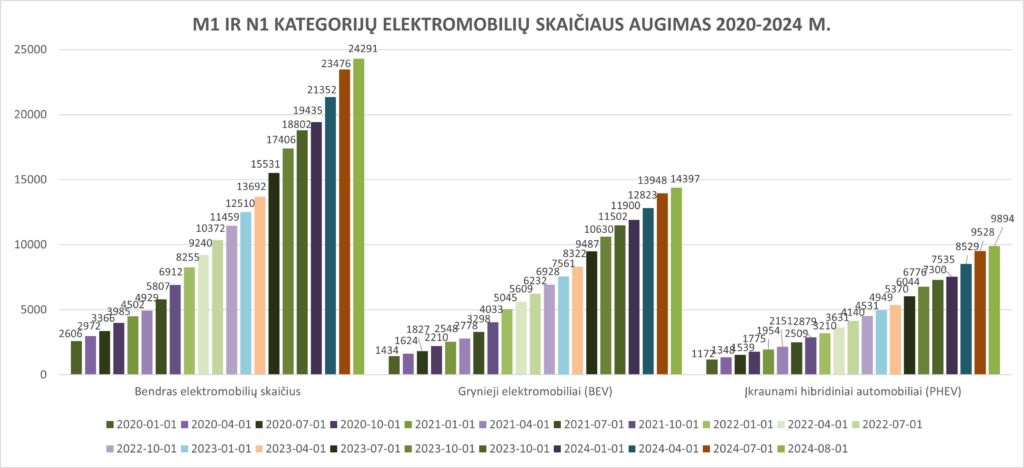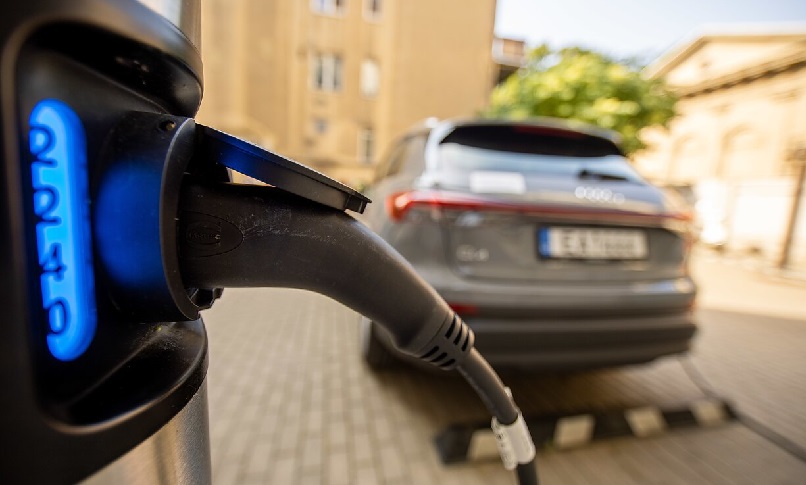Lithuania is rapidly advancing with the installation of charging points to meet the targets set by the government.
However, as the installation progresses, certain challenges arise that need to be overcome.
“Once we can establish charging infrastructure in these areas, electric vehicle adoption will increase drastically. Unfortunately, it’s not that simple,” acknowledges Auste Pranckute, co-founder of Stuart Energy, in a conversation with Mobility Portal Europe.
The truth is that, despite the efforts made by the authorities, challenges still persist, particularly in densely populated urban areas where parking spaces and access to the electricity grid are limited.
“There is still much to be done to achieve national goals and ensure that EV drivers have access to a reliable and accessible charging network throughout the country,” Pranckutė says.
Despite these challenges, Lithuania is moving towards a greener future with over 1,500 public charging points across its territory, according to Aistė Gasiūnienė, Senior Advisor of the Future Mobility Policy Group at the Ministry of Transport and Communications.
This progress is the result of the authorities’ collaboration with private companies, launching a series of initiatives to improve access to electric vehicle (EV) stations in urban areas and along major highways.
Additionally, the government has set a target to install at least 6,000 charging points by 2030.
This plan includes both public and private stations, with a particular focus on densely populated areas and key transport corridors.
“The development of public charging infrastructure in the region aligns with national goals and is promoted through municipal plans in cities, along roads, at petrol stations, train and bus stations, airports, inland waterways, and seaports,” says Gasiūnienė.
In addition to these efforts, there is the “Installation of Private EV Charging Access Points” project, initiated by the Ministry of Energy.
This proposal is backed by a budget of 44,942,457.71 euros from the “New Generation Lithuania” economic recovery plan and aims to install 53,200 units in homes, garages, and workplaces by March 2026.
The goal is to address the shortage of private charging stations.
The Lithuanian Energy Agency manages funding applications and oversees implementation, with support from European Union funds under the “NextGenerationEU” programme.
However, this is not the only initiative for the Baltic nation.
In its pursuit of sustainability, Lithuania is also exploring other financing methods, such as the “Connecting Europe Facility” programme, which provides grants for the expansion of the charging network, particularly along trans-European transport.
Not only does it facilitate mobility within the country, but also ensures EV connectivity on a continental level, allowing for seamless travel across borders.
The automotive sector in Lithuania: an expanding market
The automotive industry is experiencing steady growth in the adoption of electric cars nationwide, although it still lags behind other more developed European countries in this regard.
According to the most recent data, zero-emission cars account for approximately 3% of new registrations.
While this percentage may seem modest, it reflects a gradual increase in public awareness and the availability of charging devices, factors that are driving the growth of this market.
In fact, as of 1 August 2024, according to REGITRA LLC, a total of 24,291 sustainable cars had been registered, of which 14,397 were battery electric vehicles (BEVs) and 9,894 were plug-in hybrid vehicles (PHEVs).

Although most of the models sold are second-hand, brands like Tesla, Volkswagen, and Nissan have gained popularity among EV buyers.
One of the key pillars in this process is the financial support the government offers to both individuals and companies.
Subsidies for the purchase of electric vehicles include up to 5,000 euros for a new vehicle and 2,000 euros for a used one.
Moreover, companies that purchase zero-emissions vehicles can benefit from significant tax exemptions, such as the exemption from the 21 per cent Value Added Tax (VAT), which reduces the total cost of ownership.
As government policies evolve and infrastructure improves, the EV market in Lithuania is expected to continue its expansion in the coming years.
The country is developing a comprehensive strategy to promote electric mobility, intending to significantly increase the number of sustainable vehicles on the roads by 2030.
This includes plans to further expand charging infrastructure and continue offering financial incentives for both private and commercial EV adoption.
In conclusion, it is safe to say that Lithuania is taking important steps towards a more sustainable mobility future.
The combination of subsidies, favourable government policies, and growing public awareness lays the foundation for significant growth in the adoption of electric cars and the development of the necessary infrastructure to support them.








